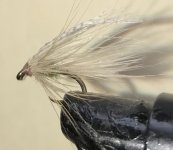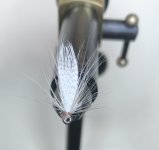afishinado
Moderator
Staff member
I tied and fished this wet fly all the time back-in-the-day and always caught trout early in the season with a dark hendrickson. This is the "Adams" of wet flies. It's easy to tie with common materials and catches fish. I don't know why I rarely tie or fish this fly, but I plan to use this wet more this season.
The sister wet fly to this (in my mind anyway) is the light cahill wet. It has a cream body and tan hackle, and is tied the same as the dark hendrickson shown in the video. The Cahill works best later in the season when the lighter flies like sulphurs or cahills hatch.
You really can't fish either one wrong. You can dead-drift like a nymph swing or strip in to catch fish. Give both flies a try this spring and I guarantee you will be rewarded with a [d]full creel[/d]....uh, plenty of released trout.
The sister wet fly to this (in my mind anyway) is the light cahill wet. It has a cream body and tan hackle, and is tied the same as the dark hendrickson shown in the video. The Cahill works best later in the season when the lighter flies like sulphurs or cahills hatch.
You really can't fish either one wrong. You can dead-drift like a nymph swing or strip in to catch fish. Give both flies a try this spring and I guarantee you will be rewarded with a [d]full creel[/d]....uh, plenty of released trout.





